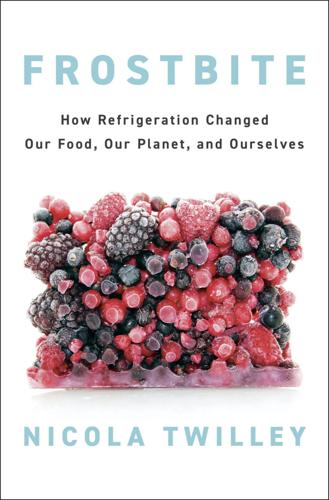
Frostbite: How Refrigeration Changed Our Food, Our Planet, and Ourselves
by
Nicola Twilley
Published 24 Jun 2024
What’s more, because the fruit is relaxed, it is more resistant to other stresses, like mold, reducing the need for chemical fungicides. Today Apeel is used as a supplement to refrigeration, not a replacement. “That’s the way that we do things today, because the dogma in the fresh-produce industry is the cold chain, the cold chain, the cold chain, and did I mention the cold chain?” said Rogers. In the lab, Apeel has begun to see evidence that it will be able to quadruple shelf life—at which point it will have effectively matched refrigeration’s powers to slow produce decay. In other words, we’d get the same result from a coating made from food waste that requires very little energy for its one-time application as from the entire power-hungry and labor-intensive system we’ve built to keep our food cold.
…
El-Mogy and Lisa Kitinoja, “Review of Best Postharvest Practices for Fresh Market Green Beans” (PEF White Paper 19-01, The Postharvest Education Foundation, February 2019); Adams, Marketing Perishable Farm Products; Ministry of Finance and Economic Planning (MINECOFIN), Republic of Rwanda, “Vision 2050,” December 2020; Ministry of Environment, REMA, and United Nations, “Rwanda National Cooling Strategy,” 2019; National Agriculture Export Board, “Cold Chain Assessment: Status of Cold Chain Infrastructure in Rwanda,” January 2019; University of Birmingham, “Africa’s Clean Cooling Centre of Excellence Moves Closer to Boosting Farmers’ Livelihoods,” news release, December 8, 2020; and “ACES Synthesis Report on Rwandan Agriculture and Vaccine Cold-chain Equipment, Policies, Programmes and Practices.” On the nexus of refrigeration, food waste, hunger, and climate change, I drew on the following: Esben Hegnsholt, “Tackling the 1.6-Billion-Ton Food Loss and Waste Crisis,” Boston Consulting Group, August 20, 2018; World Wildlife Federation, “Driven to Waste: Global Food Loss on Farms,” July 2021; J.
…
The United States already boasts an estimated 5.5 billion cubic feet of refrigerated space—a third polar region of sorts. This is an almost unimaginably large volume: the tallest mountain on Earth, Everest, occupies only roughly two-thirds that amount of space from base to peak. As the developing world begins to build its own American-style cold chains, the expansion of this manufactured Arctic has accelerated. According to the most recent statistics from the Global Cold Chain Alliance, the world’s chilled and frozen warehouse space increased by nearly 20 percent between 2018 and 2020—a leap that still left most of the planet’s citizens provisioned using less than a sixth of the cold-storage capacity required to feed the average American.
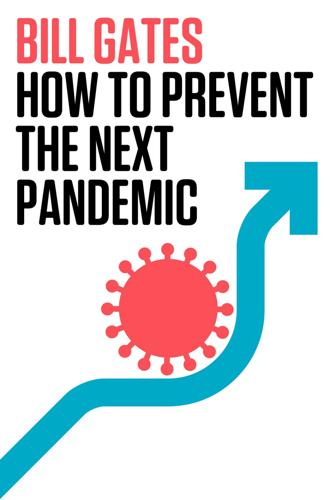
How to Prevent the Next Pandemic
by
Bill Gates
Published 2 May 2022
(Keeping them at the right temperature throughout the process is known as maintaining the cold chain.) The manufacturer of the rotavirus vaccine soon fixed the problem by changing the size of the vials, but it was a vivid illustration of a fundamentally important point about vaccines: Delivering them to every part of the world where they’re needed is an enormous logistical challenge, and seemingly small decisions like the size of a container can throw everything off. The good news is that the cold chain and other hurdles in delivering vaccines have been solved in most parts of the world. Today, 85 percent of children get at least three doses of the pentavalent vaccine I mentioned earlier.
…
Countries that made a point of improving their own immunization efforts were also well positioned to respond. Let’s look at one of them. After it won independence from the U.K. in 1947, India undertook a massive campaign to eliminate smallpox—a project that required improving its health system, training vaccinators, buying cold chain equipment, reaching even the most remote parts of the country, and creating a surveillance network for vaccine-preventable diseases. It took decades, but it worked. India’s last case of smallpox was reported in 1975. Then, in the early 1980s, India turned to another problem: low rates of routine childhood immunizations.
…
If China, India, the United States, and the European Union each agree to provide a quarter of the capacity in the near term and countries in Latin America and Africa keep developing their facilities, we will have a global solution. Another crucial area for research is to make it easier to deliver vaccines by, for example, solving the cold chain problem. Micro-needle patches would do that while also making it less painful to get a vaccine and allowing people to vaccinate themselves. Measles vaccines that use micro-needle patches are in the pipeline, but a lot of work remains to make the approach cheap enough to use in large numbers. Other promising ideas include vaccines delivered via nasal spray, ones that give protection for decades, ones that are given in a single shot without the need for follow-up doses, and combination vaccines that work against multiple pathogens (a combined flu-and-COVID shot, for example).
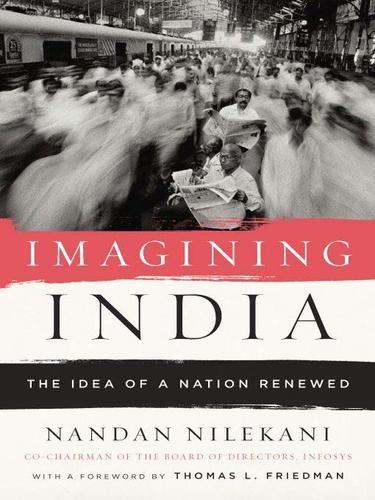
Imagining India
by
Nandan Nilekani
Published 25 Nov 2008
“The act restricted the movement of agricultural produce across state and even district borders, and limited the amount of extra food a trader could keep in his store backrooms,” he says. Agricultural markets imploded to local networks. There were other problems that thwarted the rise of interstate markets. The absence of physical infrastructure and cold chains made the movement of goods difficult and that of perishable goods near impossible. While the rail network was the one transport system that could pass through states unhindered, its snail-crawl expansion led to an emphasis on road freight.8 This gave immense power to state border patrols that held the interstate movement of goods virtually hostage while regulating the traffic of trucks.
…
The rise of such access to the global market has encouraged Indian companies to invest capital into building the supply chains and networks to source and produce across the country. The company Calypso Foods, a growing agricultural exporter, has linked more than 5,000 farmers in the south and 1,000 farmers in the east to its supply chain network. Its founder, Debashish Mitra, tells me, “We are building cold chains to transfer the fruits and vegetables to the markets and ports for exports, and we use mobile phones to communicate with our ‘farmer-partners’ on fertilizer use, planting patterns and harvesting times.” The new focus on single-market synergies is also driving reform toward national policies and infrastructure around critical sectors such as energy.
…
A big challenge here is that the left and the right in India are looking at the same picture of a crumbling agriculture sector and are seeing entirely different things. Left economists such as Prabhat Patnaik blame inflation on the “rises in commodity prices.” Reformers argue that rising food costs can be far better addressed by improving the efficiency of the supply chain between farmer and consumer, through, say, better roads and cold chains for produce, so that efficiency allows the producer to get higher prices and the consumer to buy at lower costs. These are not small gains—right now spoilage during transportation causes Indian farmers to lose one third of their produce. But there is a lack of faith among the left in the ability of markets to decide price.
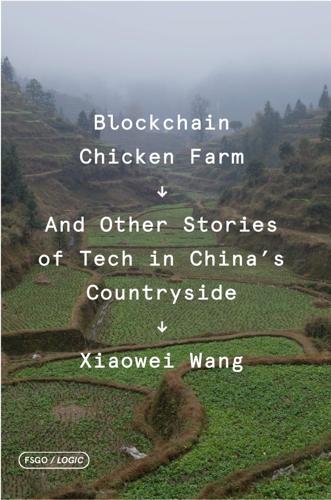
Blockchain Chicken Farm: And Other Stories of Tech in China's Countryside
by
Xiaowei Wang
Published 12 Oct 2020
Matilda points out that this is not a China-specific problem: middle-class consumers globally expect constant availability of a range of foods, and this lengthens the supply chain across towns, provinces, and countries, making it possible to always have strawberries at the supermarket, no matter what season it is. But with the addition of each block on the chain comes another potential source of failure. Careful sourcing from farms is only part of the solution. Even the best products can be stymied by broken links in the cold chain during transport. Matilda gives the example of truck drivers, who will often turn off their refrigeration in order to save gasoline money and pocket the extra cash. When you start transporting food across hundreds of kilometers, control over the transportation process decreases. And due to effects on the ultimate food safety of perishable goods, this means, for consumers, the difference between a night out on the town and a night at the hospital. 3.
…
ET Agricultural Brain is like a Swiss Army knife of models—these models are fed training data from specific clients, big industrial farms that raise pigs and grow melons, or even agricultural drone companies like XAG, which it helps crunch through sensor data to finesse autopilot capabilities. It can determine the best time to plant, based on the weather, or when to pick fruit for optimal sweetness. ET Agricultural Brain also conveniently plugs into Aliyun’s other offerings, like ET Logistics Brain, which can perform complex calculations on the cold chain during food delivery. The problem Matilda posed would be gone with ET Logistics Brain, which would calculate the amount of refrigeration a truck driver had used by sensing how much gas was left in the tank by the end of a trip. And where are all the human farmers in this scheme? Are they relaxing, eating peanuts as the machines do all the work?
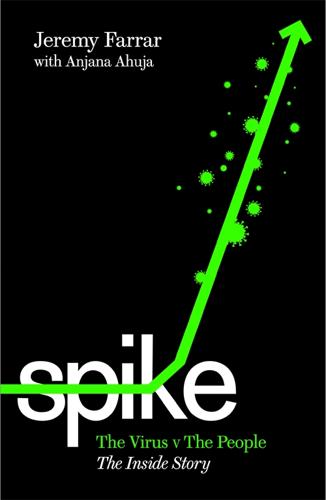
Spike: The Virus vs The People - The Inside Story
by
Jeremy Farrar
and
Anjana Ahuja
Published 15 Jan 2021
There has been a dizzying pulling together of activities, from basic science and new vaccines, to funding via the World Bank, and then delivery and implementation which is the hardest bit, of course. It negotiates contracts with manufacturers; organises distribution and sorts out the logistics, including cold chains. I was involved with setting up the accelerator. And, to begin with, it was a nightmare. How do you tackle the worst pandemic you have ever seen at the fastest possible pace? That was the idea behind the ACT-Accelerator. It meant persuading some of the biggest names in global health to work together for one purpose: to end the acute phase of the pandemic (which means bringing transmission under control) as quickly as humanly possible.
…
In the meantime, the UK and US could stake a claim to global leadership by drawing up a timetable for sharing surplus vaccine doses to which they are entitled under contract. These precious supplies should not be dispensed like last-minute giveaways, but according to a carefully planned schedule: it takes time to set up the cold chains, transport networks and labour force to deliver nationwide vaccine programmes. Not to do so would be a failure of statecraft and diplomatic vision, threatening humanity’s ability to build coalitions to address future pandemics, climate change, drug resistance and all the other global challenges heading our way.

Geek Heresy: Rescuing Social Change From the Cult of Technology
by
Kentaro Toyama
Published 25 May 2015
That’s not a small sum, but it’s well below the nearly $1 billion budgeted in 2011 alone by the Global Polio Eradication Initiative, a partnership run by the World Health Organization. The program is plainly paying for something more than the vaccine.27 Could it be lack of infrastructure? Vaccine delivery depends on the “cold chain,” the transport of vaccines to individuals under steady refrigeration. It is much harder to provide a good cold chain in environments with poor roads, old trucks, unreliable power, and little access to chilled storage. Yet the nations of the world managed to eradicate smallpox at a time when asphalt, automobiles, and refrigerators were even rarer than they are today.28 Of course, technology, money, and infrastructure are needed.
…
See also Economics Carlin, George, 275(n8) Carr, Nicholas, 23 Caste system, 64, 139 Cause and correlation, 35 Censorship Arab Spring uprising, 33 Chinese Internet, 49–52 limiting technology use in the classroom, 119 Changing Lives (Tunstall), 270(n2) Character human maturation and, 161 learning, 165, 262(n29) strengths, 253(n20) See also Heart, mind, and will Charity compared with mentorship, 205 percentage of GDP, 269(n40) See also Nonprofit organizations; Poverty alleviation Charter schools, 62, 73, 239–240(n51) Check dams, 199 Children child-rearing, 192–193, 270(n1) commitment to save, 212–214 digital natives, 10–11 educational technology, 114–121 natural learners, 11 self-control, 265(n3) sexual abuse, 148, 257(n53) teaching and parenting, 202–203 text-messaging, 56 vaccines, 64–65 video games, 12, 114–115, 117, 122, 228(n20) See also Education and training China agricultural extension programs, 207, 273(n20) carbon reduction, 215–216 education, 13, 145, 229(n29) Internet censorship, 49–52 Max Weber, 176, 255(n7) one-child law, 205 PISA results, 229(n29) social media censorship, 23, 49–52 Toms Shoes manufacturing, 243(n31) See also Confucianism Choudhury, Abdul Mannan, 196–201 Civil Rights Act, 63–64 Civil society, Arab Spring and, 32–35, 37 Classroom management, 115–116, 118–119 Climate change, 23, 134, 215–216 Clinton, Bill, 49, 85 Clinton, Hillary, x, 35–36, 152 Coaching, 205 Cobb-Douglas function, 273–274(n25) Coerced partnership arrangements, 198, 205, 270(n1) Cognitive capacity, 28, 227(n10), 263(n43) Cognitive dissonance, 234(n19) Cognitive Surplus (Shirky), 230(n17) Cohen, Jared, 21, 229(n5) Cohen, Roger, 32–33 Cold chain of vaccine delivery, 65 Coleman, James, 145, 256(n42) Collective action. See also Self-help groups Collectivism, individualism and, 93 Colombia: One Laptop Per Child, 8 Communications Arab Spring suppression of, 33–34 cyberbalkanization, 47 history of technologies, 7–8 latent desires driving habits, 40–41 management, 44–46 personal and political interaction, 46–47 telecenters, 105 texting, 25, 56, 69, 235(n33) unintended consequences, 56 See also Mobile phones; Social media Community efforts.
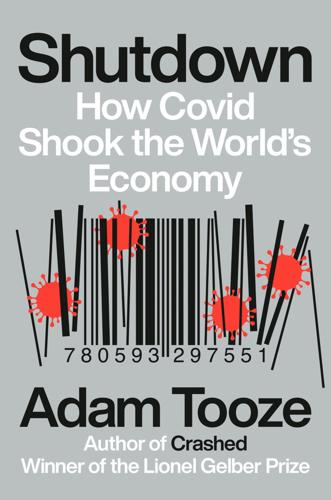
Shutdown: How COVID Shook the World's Economy
by
Adam Tooze
Published 15 Nov 2021
Ethiopian Airlines, which had played a major role in flying PPE out of China earlier in the crisis, was contracted as the airline to carry doses from China. It converted an idle fleet of thirty Airbus and Boeing passenger jets to support the cold chain. A specialized storage facility was established in Addis Ababa and negotiations began to establish a WHO-approved production site in Egypt. Both China’s Sinovac and Russia’s Sputnik V were under consideration. Until production could begin in Africa, air freight would operate from Shenzhen Airport, where Alibaba was building China’s first international cold chain facility.61 In early March, Ethiopian Airlines made its first delivery, carrying 2.2 million doses provided by COVAX
…
J. Mardell, “China’s Vaccine Diplomacy Assumes Geopolitical Importance,” Mercator Institute for China Studies, November 24, 2020. C. Tan and E. Maulia, “Red Pill? Behind China’s COVID-19 Vaccine Diplomacy,” Nikkei Asia, November 4, 2020. 61. R. Liao, “Alibaba and Ethiopian Airlines to Launch Cold Chain Exporting China’s COVID Vaccines,” TechCrunch, December 3, 2020. CHAPTER 13. DEBT RELIEF 1. A. Winning, “South Africa to Pay $5.25 a Dose for AstraZeneca Vaccine from India’s SII,” Reuters, January 21, 2021. 2. H. Dempsey and T. Wilson, “WHO Head Warns of Global ‘Moral Failure’ on Vaccines,” Financial Times, January 18, 2021. 3.
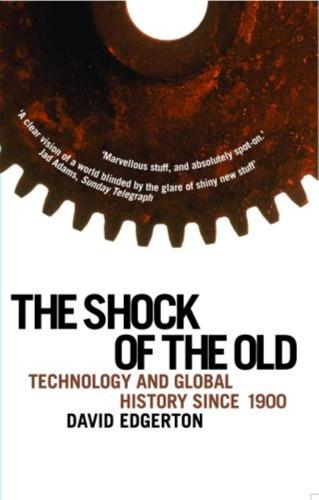
The Shock of the Old: Technology and Global History Since 1900
by
David Edgerton
Published 7 Dec 2006
It is a big claim, both because refrigeration does not seem to be that important, and because few remember just how important the importation of refrigerated food into Britain was even before the Great War, or how important this was for the global economy. For the late twentieth-century world the claim would be stronger still, and applied not just to Britain and the USA, but to the whole world, crisscrossed as it was by refrigerated lorries carrying every kind of material in what came to be called ‘cold-chains’.19 Many carried equipment made by a company called Thermo-King which, from 1940, manufactured the refrigeration gear patented by an inventor, Frederick Jones (1893–1961). He was the first black (as he is universally labelled, despite having a white father) to be awarded the National Medal of Technology of the United States.
…
Brazilian aircraft carrier Minas Gerais (Tom Pietrasik) Index Figures in italics refer to captions; those in bold to Tables. 2,4-D herbicide 162–3 17 of October (ship) 94, 124 A A-bomb see atomic bomb abattoirs 173 abortificients 23 abortion 23 Abu Ghraib prison, Iraq 156 academic science, and invention 185–7 acid rain 121 acupuncture 49 Acyclovir 163 advanced gas-cooled reactors (AGRs) 21 AEG 193 aeronautical research 186 aeroplanes ix, xiv, 1, 3, 6, 28, 159, 191 appearance as a new technology 31 civil aircraft 117 and civilianised warfare 139 downplaying of military origins 142 hypersonic 38 killing by 146 and nationalism 116 powered aeroplane innovated in the USA 111 primarily a weapon of war 116, 158 R&D 197 supersonic 38 see also aviation; flight Afghanistan 145, 153 Africa death rate per car 27 guerrilla rebellions 152–3 malaria 27 sub-Saharan income per head 207 African National Congress 122 AGA range 57 Agency for International Development (AID) 157 agent orange 163 Agfa 130, 193 Agfacolor 130 agricultural revolution 64–6 agriculture family farms in the USA and USSR 62–4 horsepower xiii, 33–4 output 53 productivity 65, 74 shift to industry 52 Agrigento, Sicily 78 AIDS 25, 27, 49, 164, 207 Air France 21–2 air transport, cheap 115 air-conditioning 170 aircraft see aeroplanes aircraft industry 116, 158 airships 38, 50, 199 Al-Khahira (Cairo) jet trainer 125 Alang Beach, Gujarat, India 208 Albania 118, 131–2 Aliano, Basilicata, Italy 122–3 alkali 190 Allen & Hanbury 196 Almirante Latorre (battleship) 92 alternating current (AC) electrical systems 8–9, 176 alternatives assumption that there are no alternatives 6–7, 8 comparable alternatives 7–8 using a thing marginally better than alternatives 8 American Civil War 146 American Monarch (ship) 167 Amgen 202 AMO factory, Moscow 126 amodiaquine 26 analytical labs 192 animals husbandry 66 hybrids 190 killing 161, 164, 172, 173–6 anti-aircraft guns 14, 15 anti-malarials 164, 199 anti-missile systems 155–6 anti-virals 163 antibiotics 163, 190 antifungal treatments 164 apartheid 122 Apocalypse Now (film) 152 Arab oil embargo (1973) 122 Arab–Israeli wars 146–7 architecture ‘post-modern’ viii vernacular 41 Argentina builds a jet fighter 124–5 meat exports to Britain 172 national industrial development 118 the picana eléctrica 157 Argentina (liner) 124 Armament and History (Fuller) 141 Armenians 178–9 Armour meat packers 171, 172 Armstrong, Neil viii artillery fire 143, 144, 190 asbestos 42, 43, 211 asbestos-cement 42, 43 Asia: rice production 64–5 astronauts viii AT&T 193, 195 Atebrin (mepacrine) 25 atomic bomb xiv, 15–19, 21, 114–15, 117, 123, 138, 139, 158, 159, 185, 198, 199 atomic power 3, 6 Auschwitz–Birkenau extermination camp, Poland 121, 165, 180–81, 182 Australia maintenance and repair 80 meat trade 172 national industrial development 118 autarky 115, 116, 117–19 Autochrome process 193 autogiro 103 automation 2, 3, 85 Aventis 196 aviation 1, 19, 143 choices in aircraft construction 10 civil 6, 116 and empires 132 engine types 10 maintenance 87–91, 89 power of 141 supersonic stratospheric 3 see also aeroplanes; flight Axis Powers 18 AZT 164 B B-29 bombers 13, 15, 16, 123 B-52 bombers viii, ix, 95, 152, 155 ballistic missiles 154 Bangkok, Thailand long-tailed boats 47 Science Museum 28 Bangladesh motorised country-boats 48, 61 rice production 65 shipbreaking 208 barbed wire 146 Barham, HMS 93–4 BASF 119, 120, 121, 193 battleships x, xiv, 92–4, 93, 97, 141, 142, 143, 148–9, 154 Bayer 193, 194 Bayh–Dole Act (1980) 187 Beechams 196 Beef Trust 171 Belgrano (ARA General Belgrano) 94 Bell Labs 195, 196 Bell telephone 132 Belzec extermination camp, Poland 179 Bergius, Friedrich 120 Berlin–Baghdad railway xi bicycles x, 4, 45, 50–51, 58, 61 bidonvilles 41 Billingham plant, Stockton-on-Tees 119, 121 biological warfare 149 biotechnology 1, 185, 188, 192, 196, 202–3 Biro, Ladislao José 103 biro pen 103 birth control 23 Bishop, Billy 114 Bloodhound anti-aircraft missile ix Blue Star Line 172 boats fishing 49 long-tailed 47–8 motor torpedo 68 motorised country-boats 48–9, 61 bomber aircraft viii, ix, x, xiv, 9, 13, 13–16, 18, 95, 97, 123, 143, 147, 148, 150, 152, 155 Bomber Command 14 bombing atomic 15–19 conventional 12–15 ‘dumb’ bombs 155 ‘smart’ bombs 155 targets 12–13, 14, 15, 16 Borges, Jorge Luis 94 boundaries 117, 131, 132 branding 71 Braun, Werner von 18 Brazil (film) 75 Brezhnev, Leonid 102 Bristol Jupiter engine 88 Britain agricultural yields 64 autarchy 118 aviation 104, 111 car production 69 coal consumption ix cotton industry 36–7, 105, 190 economic growth 206 executions 176 horsepower in First World War 35 maintenance and repair 80 meat imports 172 output per head 109 privatisation of railways 87 R&D 109 railway workshops 98 steam power ix, 105 television 131 truck production 69 two-way movements between Britain/France and Britain/India 111–12 British Airways 21–2 British Electrical Development Association 56 British Empire 135 Brunnental, Soviet Union 62–3 Bumper V-2 rocket 2 Burmese army 145 Burney, Commander Sir Charles Dennistoun 167 buses ix, 96, 98, 191 C cable TV x, 49 Calcutta: rickshaws and cycle-rickshaws 45–6 Cambodia 182 Camden Market, London 33 camels 35 caravans 28, 30 cameras, replica 50 Canada: maintenance statistics 79 cap, the 24 Cape Canaveral, Florida 2 capitalism 76, 128 carbon monoxide 121, 179–80 Carrier, Dr Willis H. 170 Carrier Corporation 170 carrier pigeons 43 Carson, Rachel: Silent Spring 163 carving 28 CASA company 125 cavalry units 35 CDs 7 cement ix, 45 ceremonial occasions: use of reserve technologies 11 Césaire, Aimé 133 CFC gases 211 Chamoiseau, Patrick: Texaco 42–3 Cheliabinsk, Soviet Union 126 Chelmno extermination camp, Poland 179 chemical warfare 164 chemicals 1, 105, 188, 191, 192 chemistry 2, 130, 185, 186 organic 185 synthetic 4, 185 Chicago meatpackers 129–30, 171–5 chickens 66, 163, 164, 174–5 China agriculture 73 and Albania 131–2 atomic weapons as ‘paper tigers’ 19 autarchy 118 bicycle production 45 collective farming abolished 73 control of the internet 137 cotton textiles 65 Cultural Revolution 45, 72 economic growth 109, 112, 207 economy 73 executions 177 export of containers 74 foreign enterprise 137 ‘four big belongings’ 58–9 Great Leap Forward 44–5, 73 a hydraulic society 76 imitation of foreign technologies 112 industrialisation 73 links with Soviet Union (1949–60) 131 low-tech exports 137 Maoists 152 nationalism 137 old small scale technologies 72–3 pig production 66 produces Soviet technology 44 promotion of small-scale rural industries 72–3 rural industries 73 second Sino–Japanese War 140, 179 steel production 73 ‘technological dualism’ 44 Chinese Communist party 73 Chinese First Automotive Works 126 chlorinated organic compounds 161–2 chloroquine 26, 164 cholera 25 Ciba 196 Ciba-Geigy 26 Cierva, Juan de la 103 cinema ix, 203 cities of the poor world 39–40 clinical trials 11–12, 201 clothes: trade in old clothes 81 coal consumption ix hydrogenation of 120, 121–2, 186, 199 Cold War 123 ‘cold-chains’ 170 collectivisation 63, 64, 127 colonialism 39, 134 Common Market 119, 175 communications technologies xiv, 2 Communist movement 60 Companhia Energética de Sao Paulo 99 computer-numerically-controlled machine tool 158–9 computerisation 2 computers ix–x, 1, 158 analogue 7, 9 cheap PCs 71 digital 3, 6, 7, 9 initial cost as a percentage of lifetime cost 78 Concorde 21–2, 38, 96–7 condoms 1, 22–3, 24, 25, 49, 190 Congo War, second 146 contraception vii, x, 1, 22–5, 49, 190 cooking ranges 57 copper 73 corn, hybrid 64 corporate research laboratories 192 corrugated iron 41–3, 50–51, 78 cost-benefit analysis 11–12, 21, 142 cotton industry ix, 36–7, 65, 105, 136 Cotton Industry Act (1959) 38 credit agreements xv creole technologies xii, 39, 43–5, 46–7 creolisation of technology 85 Cuba 36, 207 Cudahy meat packers 171 cultural lag viii, 141, 212 Cultural Revolution 45, 72 cultural significance, measurement of 1 cycle-rickshaws 46–7, 48–9, 191 D Daktarin 164 Dalén, Nils Gustav 57 Datong Locomotive Works, China 50 DC-3 airliner 88, 197 DC-4 aircraft 197, 198 DC-6 aircraft 88 DC-8 jet 88, 197 DDT 26–7, 38, 162–3, 162 De Niro, Robert 75 de-globalisation 212 dependence 39 depression 37 Derwent jet engine 123 design 71 Detroit automation 86 Deutsches Museum, Munich 104 development labs 192 Dewoitine, Emile 125 diaphragm 24 diesel engine 3 differential analysers 7 diffusion vii Digital Signal Processing chip 195 direct current (DC) electrical systems 8, 9, 176 division of labour 72 Dnieper complex, Soviet Union 127 dockyards 91 domestic equipment 81 domestic production 56 ‘domestic science’ 56 domestic servants 56 domestic technologies xiv, 4, 56 domestic work, scientific organisation of 56 donkey carts 28, 30, 49 Dornier, Claude 125 douches 23 Dreadnought (battleship) 92 dreadnoughts 92, 148 Dufay process 130 Du Pont 20, 158, 193, 194–5 Durex 25 E East Germany: hydrogenation 121 Eastman Kodak 130, 193 economic growth 5, 52, 108, 109, 110, 206–7 economic history 3 economies of scale 71 ECT (electroconvulsive therapy) 38 Edison, Thomas 176 Edwards Air Force Base, California viii Egypt Ancient 76 aviation 126 Einsatzgruppen 179 ELAS resistance movement 60 electricity x, 1, 3, 6, 76–7, 185, 188, 190, 192 increased usage 5 electrification 2, 6, 32 electrocution/electric chair 165, 176, 177, 178 electronic communication: change in price 6–7 electronics 3, 99, 105, 191 Elizalde 31 Elliot, Gil: The Twentieth Century Book of the Dead 145–6 EMI 130, 131 empires 132, 134 employment in agriculture 53 in industry 53 service industries 53, 70 enclaves for European colonisers 134 engineering 19 masculinity of 101 mass production 67 engineers xiii, 100–102, 192–3 state 101 engines jet 10 petrol 10 Erikson, Gustaf 95 Europe car accidents 27 car production 69, 70 uptake of new technologies 32 European Union (EU) 200, 206 Eva Péron (liner) 124 F Fairchild Semiconductor 195, 203 Fairfree (factory stern trawler) 167 Falklands war 94 Far East growth rates 207 Faust, Mrs Mary 54 fertilisers 44, 45, 50, 64, 65, 67, 119–20 fertility control 23 feudalism 76 Fiat 69, 127 fibre-optic cables 7, 49 firing squads 176 First World War 31, 34, 34–5, 130 battleships x, 148, 149 casualty rates 146 chemical warfare 164 a chemist’s war 138 deaths 143 developments in artillery practice 143 H.

Frugal Innovation: How to Do Better With Less
by
Jaideep Prabhu Navi Radjou
Published 15 Feb 2015
For instance, Ericsson and Philips recently unveiled a project that combines city streetlighting with mobile-phone infrastructure. The two companies will incorporate mobile-phone antennae into energy-efficient LED streetlights that can be placed in parts of cities where carriers want to increase their network coverage. Western firms are also learning from health-care firms in Africa which piggyback on Coca-Cola’s “cold chain” (a temperature-controlled supply chain) as a cost-effective way to preserve life-saving medicine and have it delivered rapidly to remote villages. Rival chocolate-makers Hershey and Ferrero, for instance, have agreed to share warehousing and transport assets and systems across North America, thus reducing the number of distribution trips.
…
Index 3D printers 18, 47–9, 50, 128, 132, 134, 152, 166 3D printing 9, 47–9, 50, 51, 52, 132, 151–2, 206 4D revolution 53–4 A Accor 172–6 Accountable Care Solutions 211 Active Health Management 211 adaptability 90, 154 additive manufacturing 47–9 ADEO Group 127, 128 advertising 24, 61–3, 71–2 aerosols 95, 96 Aetna 32, 208–13, 213, 215 Affinnova 31, 141 affordability 3, 82, 136, 153, 161, 172, 194, 216 in emerging markets 4, 56, 120, 198, 206 health-care innovations 202–3 and quality 1, 3, 9, 12, 75, 120–1, 198, 206 affordances 120–1 Africa 40, 56, 146, 161, 164, 197 financial services 198, 201 IBM in 200–2 innovation potential 200–2 as market 12, 169, 197–8, 199 ageing populations 109, 194 ageing workforce 13, 29, 49, 153 agility 26, 41, 69, 75, 143, 169–70 in innovation 21, 27, 33–4, 42–3, 72, 154, 167, 173, 176, 206 in manufacturing 44–5, 49, 52 Akerman, Dave 136 Air Liquide 205–7 air pollution 74, 78, 187, 200 Airbnb 10, 17, 85, 136, 140, 163, 173, 175 aircraft 68, 149 parts 48–9, 49, 121, 151–2 airlines 60, 121 Alteryx 32 Amazon 46, 60–1, 150 Amelio, Gil 68–9 AmEx (American Express) 161–2, 167, 215 Amgen 45 Anderson, Chris 18 Android operating system 130, 172 AOL 42 Apple 17, 24, 68–9, 71, 99, 150, 155, 172 Apple TV 62 apps 99, 106, 107, 108, 111–12, 124–5, 148 Arduino 135 Ariely, Dan 132 Arla Foods 37 artists 88, 93 ASDA 158–9, 159 Asia 161, 164, 200 aspirations 88–9, 119–20, 198 assets digitising 65–6 flexing see flexing assets reusing 92–3 sharing 159–61, 167 AT&T 21 ATMI 88 Auchan 13, 126, 128, 215 austerity 5, 6–7, 23 Australia 5, 62, 146, 200 Autodesk 48, 92, 132, 196–7 Automatic 131 automation 49–50 Avon 146 AXA 116 Ayed, Anne-Christine 75, 76 B B Corps (Benefit Corporations) 82 B2B (business-to-business) sectors 25–6, 34, 57, 142, 161, 175, 212 B2C (business-to-consumer) companies 25, 34, 212 Badrinath, Vivek 174 BAE Systems 48–9 Ban, Shigeru 93 Bangladesh 66 Bank of America 155 banking services 13, 17, 57, 161–2, 198 see also financial services Banner Health Network 210 Banzi, Massimo 135 Barber, Michael 181 Barclays 100, 115, 117, 215 Barry, Mike 183–4, 187 Bayer 66–7 Bazin, Sébastien 173 BBVA 125 Béhar, Yves 110 Belgium 103 Benefit Corporations (B Corps) 82 Benelux countries 7, 103 Benetton 67 Benoît, Paul 89 Berg 89 Bergh, Chip 122–3 Bertolini, Mark 208–9, 212, 213, 217 BHAGs (“big, hairy audacious” goals) 90–1, 158–9, 179, 191–2 Biasiotta, Bruno 123 big data 32–3, 117, 150 big-box retailers 9, 18, 137 “bigger is better” 2, 8, 14–15, 104 biomimetics (or biomimicry) 84 Birol, Jacques 163–4 BlaBlaCar 10, 85, 163 Blanchard, David 94, 96 Bloomberg, Michael 18, 79, 133 BMI (business model innovation) 192 BMW 47, 62–3, 86 BNP Paribas 168–9 Boeing 92, 144 Bolland, Marc 180–1, 186 Bontha, Ven 59 Booz & Company (now Strategy&) 6, 22, 23, 28, 171 Bosch 156 Boston Consulting Group 55, 64, 116, 145, 217 Botsman, Rachel 10 bottom-of-pyramid (BOP) customers 161, 203, 207 Bouygues Immobilier 90 BP 169 BPS (by-product synergy) 159 Brabeck-Letmathe, Peter 44, 78 brand ambassadors 143, 145 brand loyalty 46, 100, 204, 215 branding 15, 108, 119–20, 156 brands 1, 71, 139, 141, 143, 154, 165–6, 215 “conversations” with 129, 131–2 working together 154, 156–7 Braungart, Michael 82 Brazil 40, 74, 102, 146, 188, 199 emerging market 4, 12, 38, 146, 197, 199 Bretton Woods Conference (1944) 104 Brin, Sergey 63 BringBee 85 Bross, Matt 37–8, 171 Brown, Tim 121 Brusson, Nicolas 163 BT 37–8, 171 BTG (British Technology Group) 171 budgeting, personal 124–5 budgets 6–7, 36, 42 Buffett, Warren 138 buildings 196–7 bureaucracy 36, 63–4, 65, 70, 165, 169, 173, 182 business, primary purpose of 14 business model innovation (BMI) 192 business models 2, 34, 38, 80, 118, 205, 216, 217 changing 190–3, 213 business opportunities 36, 188–9, 190 business process re-engineering 192 business strategy 34 business-to-business see B2B business-to-consumer see B2C by-product synergy (BPS) 159 C C2C (cradle-to-cradle) design 75, 77, 82, 84, 97 Cacciotti, Jerry 22, 23 CAD (computer-aided design) 47, 65, 132, 165 California 79, 99 Calmes, Stéphane 127, 128 Camp, Garrett 163 Canada 5, 102 cannibalisation conundrum 15, 117–18 capital costs 45 car insurance 116 car sharing 10, 17, 85, 86, 108, 123, 163 car-related services 62–3, 116 Caravan Shop 89 carbon emissions 102, 103, 196 reducing 78–9, 106–7, 159, 160, 174 stabilising 184, 186 carbon footprint 94, 100, 102, 156, 184, 186 Carrefour 121–2, 157, 174 cars 89, 92, 116, 119–20, 144, 155, 156 electric 47, 86, 172 emissions 47, 106–7 fuel consumption 47, 106–7 fuel efficiency 8, 12, 24, 47, 78, 131, 197 low-cost 2–4 personalisation 129–30 related services 62–3 standards for 78–9 see also BMW; Ford; Nissan; Renault; Tesla; Toyota Caterpillar 31, 55 CellScope 110 Cemex 59 centralisation 9, 44, 51 CEOs 34, 40, 168, 203–5, 204 certification, sustainability 84 Chaparral Steel 159 chemical industry 33, 58, 66–7 chemical usage, reducing 79 Cheshire, Ian 185–6 Chesky, Brian 163 Chevron 170 China 44, 83, 102, 144, 213, 216 air pollution 187, 200 emerging market 4, 38, 169, 197, 205 innovation in 169, 200 mobile phones 198 R&D 40, 188, 206 selling into 187–8 shifting production from 55, 56 Christchurch (New Zealand) 93 Chrysler 166 circular economy 9, 76–7, 80–4, 159–60, 195–6 “Circular Economy 100” 76–7, 86 circular supply chains 193 Cisco 17, 29, 65, 110 CISL (University of Cambridge Institute for Sustainability Leadership) 158–9 cities 107, 153 Citigroup 161 climate change 8, 100 closed-loop products 86, 91, 185, 192–3 cloud computing 60, 61, 157, 169 CMF-A car platform 4–5, 198–9 CNC (computer numerical control) cutters 128, 134, 152 co-branding 143 co-creation 126–9, 202–3, 206–7 see also collaboration; horizontal economy; prosumers co-distribution 143 co-marketing 143 co-operation 64–5, 69, 70–1 co-opetition 158–9 Coase, Ronald 133 Coca-Cola 57, 62, 142, 154 “cold chains” 57 CoLearnr 114 Collaborating Centre on Sustainable Consumption and Production (CSCP) 193–4 collaboration 76, 114, 138–9, 176, 211, 217–18 cross-functional 36–8, 39, 71–2 see also hyper-collaboration; TechShop collaborative consumption see sharing economy collaborative manufacturing 50–1 collective buying platforms 137 Commonwealth Fund 110 communities of customers 129, 131, 132–3 local 52, 57, 146, 206–7 commuting 131 competition 22, 27, 102, 189 competitive advantage 15–16, 80, 195 competitors 19, 26, 148, 149–50, 172, 215 emerging markets 16, 205–6, 216 engaging 158–9, 167 frugal 16–18, 26, 216 complexity 24, 64 components 3, 67 computer numerical control see CNC computer-aided design (CAD) 47, 65, 132, 165 Comstock, Beth 40–1, 149, 150, 151, 170 concentration 96 Concept Lab 211 concept testing 25, 31, 72, 191 Cone, Carol 7 congestion 108, 201 constraints 4–5, 22, 34, 36, 42, 207, 217 consumer behaviour 3, 6, 97, 98–101 shaping xix, 99–101, 105–9, 125 Consumer Empowerment Index 103 consumer spending 103 consumers 8, 27, 37, 97, 105 developed-world 2, 7, 9, 102 dissatisfaction 130–1 empowerment 22, 105, 106 environmental awareness 101–2, 105 frugal 197–200 of the future 193–4 innovative ideas from 50–1 with particular needs 194–5 power 102–4, 139 social experience 139 and sustainability 95, 97, 101–4 trust of 143 young 16, 85, 86, 122, 124, 131 see also customers; prosumers consumption 85, 101–6, 115, 124, 193 continuous processing 44–5, 47, 50 Cook, Scott 19 core, focusing on 68–9 Cornillon, Paul 37 Corporate Home Exchange 175 corporate leaders 122–4, 180–1, 203–5 corporate social responsibility see CSR Cortese, Amy 138 cost effectiveness 12, 34, 149, 164, 172, 188, 190, 191 consumer energy use 53 customisation 67 health care 202 innovation 21, 173 micro-factories 52 Costco 18 costs 3D printers 48 capital costs 45 development costs 22, 36 distribution costs 54, 55, 96 electricity generation 104 energy costs 161, 190 environmental costs 11 fuel costs 121 of good-enough approach 27 health-care costs 13, 109 innovation costs 168, 171 inventory costs 54 life-cycle costs 12, 24, 196 maintenance costs 48–9, 66 manufacturing costs 47, 48, 52 operating costs 45, 215 production costs 9, 83 raw materials 153, 161, 190 reducing 11, 46, 47, 60, 84, 89, 160, 167, 200 resource costs 78, 203 shipping costs 55, 59 supply chain 58, 84 transaction costs 133 wage costs 48 Coughlin, Bill 167 Coursera 61, 112 Coye, Molly 202 cradle-to-cradle see C2C design creativity 88, 94, 128, 130, 135, 163–4, 199 in organisations 63–4, 70, 71 credit culture 115–16 CRM (customer relationship management) systems 59, 157 cross-functional collaboration 36–8, 39, 71–2 crowdfunding 17, 48, 132, 137–9, 152 crowdsourcing 28–9, 50–1, 126, 140, 143, 152, 202 platforms 142, 150–1, 151, 152 CSCP (Collaborating Centre on Sustainable Consumption and Production) 193–4 CSR (corporate social responsibility) 77, 82, 94, 161 culture, organisational see organisational culture “culture of simplification” 170 curiosity 153–4 customer behaviour see consumer behaviour customer experience, enhancing 75 customer feedback 31–2, 33, 72, 152, 170, 192 customer immersion labs 31–2 customer loyalty 28, 68, 77, 80, 124, 129, 131–2, 215 customer needs 37, 58, 90, 139–40, 170, 192, 206 changing 28, 38, 51, 127, 150, 168, 205 diversity 38, 46, 51 R&D disconnect from 26, 38 customer preferences 58, 67, 75 customer relationship management see CRM customer satisfaction 65, 128, 130–1 customer service 25–6, 127–8, 147 customer visits 18, 20, 128 customers 19, 27, 46, 76, 148, 205 alienating 24–6 behaviour see consumer behaviour bottom-of-pyramid 12–13, 161, 203, 207 communities of 129, 131, 132–3 cost-conscious 3, 6, 7, 22, 26, 156, 189, 215 dreams 140–1 eco-awareness 22, 26, 54, 75, 78, 93, 156, 195–6, 215 in emerging markets 200 engaging with 20–1, 24–6, 27–33, 34, 35, 38–9, 42–3, 115, 128, 170 as experts 146 focus on 19–21, 43, 62, 157–8, 204 goodwill of 84 motivation for change 117 multiple roles 143–6 needs see customer needs outsourcing to 143 participation 128–9 profligate 115–16 R&D and 27–8, 31–2, 38, 43 rewards for 147–8 shared 156–8 used to motivate employees 205–7 young 16, 85, 86, 122, 124, 131 see also consumers; prosumers customisation 9, 46, 47, 48, 51–2, 57–8, 67, 72 CVS Health 7 D D2D Fund 162 Dacia 2–4, 156, 179 Dannon 141 Danone 66, 141, 184, 186 Darchis, François 205–6, 207 DARPA (Defence Advanced Research Projects Agency) 49 Darukhanavala, P.P.

The New Harvest: Agricultural Innovation in Africa
by
Calestous Juma
Published 27 May 2017
For sorghum, 515 tonnes of seed was distributed to 102,578 sorghum farmers; 36,711 ha were planted in improved sorghum seeds, and an estimated 55,067 tonnes of sorghum were harvested. In response to GES support of artisanal fishermen and fish farmers, fish production has risen from 292,105 tonnes to 418,537 tonnes (a 43% increase) for artisanal fishing in inland rivers and lakes, and from 221,128 tonnes to 278,706 tonnes (a 26% increase) for farmed fish. In addition, beef cold chain is being developed in the country. Nigerian entrepreneur Famag-Jal Farms is investing $6 million in a Halal-certified processing plant, with a daily capacity of 300 cows, 890 sheep, and 1,870 goats. Banks have also increased lending to the agricultural sector, facilitated by NIRSAL, the risk-sharing facility of the Central Bank of Nigeria; a total of US$0.26 billion was lent to fertilizer and seed companies by banks between 2011 and 2014.
…
There are several training models to help farmers and plant workers acquire the skills they need. First are the private models of on-the-job training, which range from informal mentoring in the first two weeks of work to Frio Aéreo’s (a consortium of 10 partners that is concerned with managing the cold chain) formalized internship program and weekly training sessions during the slower seasons. Second are private universities, such as Universidad Privada Antenor Orrego, that train technicians and managers; there are also public institutions with similar goals, whose graduates tend to be less valued by employers.
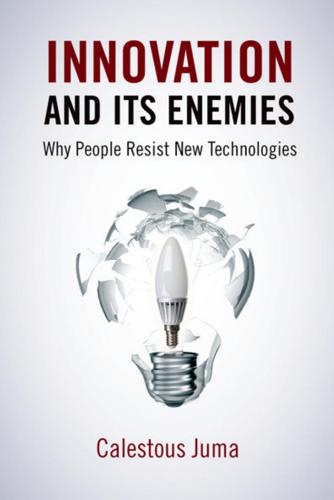
Innovation and Its Enemies
by
Calestous Juma
Published 20 Mar 2017
Industrial consumers such as grocers and taverns used the dirtiest ice, while other private consumers were willing to pay more for cleaner ice from ponds and streams. Eventually an outbreak of typhoid fever in the 1880s turned public perception against natural ice after researchers proved that “typhoid germs could survive freezing … [and that] some bacteria did live long enough to infect people, particularly with a shorter cold chain and the development of a market for ice during the winter months.”17 Pollution challenged the claim that natural ice was completely “pure.” For example, ice from Walden Pond in Massachusetts and the Schuylkill River differed noticeably in color, taste, and amount of sediment remaining in a cup of ice water.
…
The IAR was restructured in 1920 and renamed the International Institute of Refrigeration.48 This visionary institution is the only independent intergovernmental organization dealing with the science, technology, and engineering aspects of refrigeration. It promotes knowledge of all refrigeration fields, ranging from cryogenics to air conditioning, covering liquefied gas, the cold chain, refrigeration processes and equipment, refrigerants, and heat pumps. It addresses key issues such as energy efficiency and savings, health, food safety, global warming, and ozone depletion. Its founding conference was a landmark event. “More than 5000 delegates from 42 countries around the world were gathered in Paris, at the Sorbonne, in order to discuss issues concerning the striking developments in the area of artificial cold.”49 The conference was driven by national committees but the discussions were divided into thematic issues covering “(1) low temperatures and their general effects, (2) refrigerating materials, (3) application of refrigeration to alimentation, (4) application of cold to other industries, (5) application of cold to commerce and transports, and (6) legislation.”

The omnivore's dilemma: a natural history of four meals
by
Michael Pollan
Published 15 Dec 2006
Spidery arms extended in front of the machine gently rake through the bed in advance of the blade, scaring off any mice that might find their way into the salad. A fan blows the cut leaves over a screen to shake out any pebbles or soil, after which a belt conveys the greens into white plastic totes that workers stack on pallets on a wagon trailing alongside. At the end of each row the pallets are loaded onto a refrigerated tractor trailer, entering a "cold chain" that will continue unbroken all the way to the produce section at your supermarket. Earthbound's own employees (who receive generous benefits by Valley standards, including health insurance and retirement) operate the baby greens harvester, but on the far side of the field I saw a contract crew of Mexicans, mostly women, slowly moving through the rows pulling weeds.
…
Whether they would have been quite so sweet and bright after a cross-country truck ride is doubtful, though the Earthbound greens, in their polyethylene bag, stayed crisp right up to the expiration date, a full eighteen days after leaving the field—no small technological feat. The inert gases, scrupulous cold chain and space-age plastic bag (which allows the leaves to respire just enough) account for much of this longevity, but some of it, as the Goodmans had explained to me, owes to the fact that the greens were grown organically. Since they're not pumped up on synthetic nitrogen, the cells of these slower-growing leaves develop thicker walls and take up less water, making them more durable.
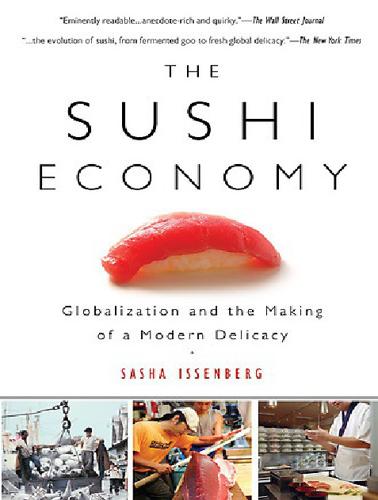
The Sushi Economy: Globalization and the Making of a Modern Delicacy
by
Sasha Issenberg
Published 1 Jan 2007
After the Japanese discovered in the 1960s how to adapt American deep-freezing technology for longdistance boats, they started turning their attention to how to bring its uses closer to the end consumer. First they designed giant deep-freezing facilities and created a network of cold-storage warehouses that paralleled the existing cold-chain system that granted consumers access to meat, fish, and dairy products whenever they wanted. In 1981, a company called Dairei began marketing a chest-sized “Maguro Freezer” to Tsukiji merchants. Its president, Susumu Kurita, had been a salesman for Nihon Freezer, targeting its super-low temperature technology to medical customers, but he saw potential uses in the food industry as well.
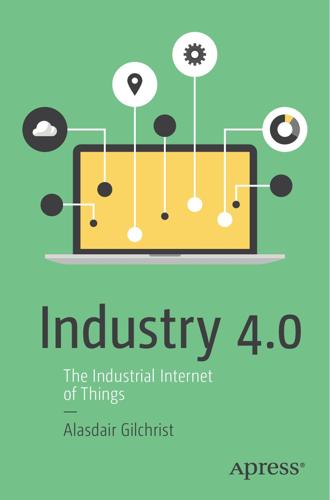
Industry 4.0: The Industrial Internet of Things
by
Alasdair Gilchrist
Published 27 Jun 2016
More often than not, the IIoT is portrayed as deploying high technology, such as augmented reality, RFID customer tracking with personalized advertising, and similar marketing concepts that would not fit easily with most retailers’ current or even future customers. 29 30 Chapter 2 | Industrial Internet Use-Cases The advantages of IoT are not delivered just through enhanced customer experience—many of the benefits come in the back store, in stock control, inventory management, perishable and cold chain management, and for larger operations, digital signage, fleet management, and smart fulfillment centers. As an example, three of the largest supermarkets in the UK reported savings of 50% after the adoption of the IIoT. For some retailers deploying IIoT solutions, it has meant installing a vast range of bewildering technologies, including hardware, sensors, devices, apps, telematics, data, and connectivity to the cloud.

How to Spend a Trillion Dollars
by
Rowan Hooper
Published 15 Jan 2020
We saw in chapter 3 how hydrogen can be made through electrolysis as a way to store excess renewable energy, and it turns out that liquid air can perform a similar function, and as a low-emission refrigeration unit.23 Collaboration between the Birmingham Cryogenic Energy Storage centre and India’s National Centre for Cold-chain Development will help develop low-carbon refrigeration in the subcontinent (and elsewhere) and start to reduce the problem of perishable food, cut food waste and reduce emissions. We’ll support a major programme. In rich countries, waste occurs at the consumer and retailer end. Consumers don’t like wonky carrots, retailers will upsell with ‘three for two’ offers and the like, or super-sized portions, and ‘best before’ labelling is confusing – all of which leads consumers to chuck away perfectly good food.
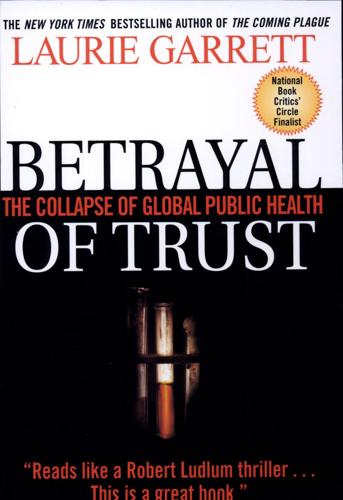
Betrayal of Trust: The Collapse of Global Public Health
by
Laurie Garrett
Published 15 Feb 2000
In some areas, they found childhood immunization rates had fallen during the 1980s below levels seen in many sub-Saharan African countries. And basic requirements of vaccine delivery, such as consistent refrigeration of supplies—or maintaining a cold chain—were routinely ignored. “They don’t know how to manage stocks and inventories of vaccines,” Steinglass explained. “They don’t know how to manage a cold chain, which by now every African country understands.” It wasn’t always so. Not at the height of the Soviet Sanitation and Epidemiology Service’s (SanEp) power when upward of 280 million citizens could be lined up and immunized in a single month.
…
And in the former Soviet nations, the Westerners learned, millions of children had received inappropriate adult-dosed shots, and these children had five times the diphtheria rate seen in children immunized with appropriate doses. And they found that, as Steinglass had noted, their Soviet counterparts knew nothing of one of the most essential principles of vaccinology, the so-called Cold Chain or necessity to maintain refrigeration of vaccines throughout transport and storage.97 Even more astounding were the regional death rates. By 1994 diphtheria had made its way into every single one of the former Soviet states, prompting an only marginally above-normal death rate in Russia of 2.8 percent of all active cases.
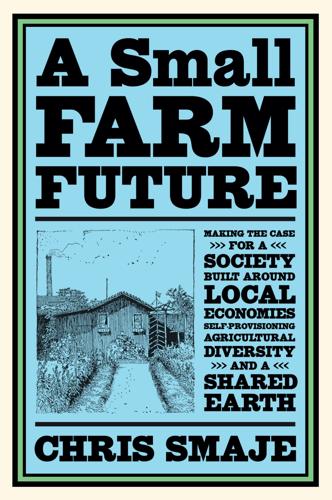
A Small Farm Future: Making the Case for a Society Built Around Local Economies, Self-Provisioning, Agricultural Diversity and a Shared Earth
by
Chris Smaje
Published 14 Aug 2020
It’s a historical irony that when we talk about ‘conventional’ farming we’re actually referring to highly specialised modern forms of production that break these long-established mixed-farming strategies into their constituent parts – grain or arable farming, dairying, meat production, commercial horticulture or orcharding, fish farming, forestry – producing cheap product via heavy fossil energy inputs in the form of synthetic fertilisers and pesticides, purchased fodders, mechanical farm traction and global cold-chain food distribution networks. Barely more than a century old, this conventional agriculture is already playing a role in each of the crises I outlined in Part I and to Earth systems breakdown, more generally. So we badly need to switch to something less conventional. Combining the strategies of arable and horticulture, pasture and woodland, and seeking synergies between them, the world’s mixed-farming traditions offer the best practical examples of the low-energy, resource-conserving, locally resilient agriculture that’s now needed.
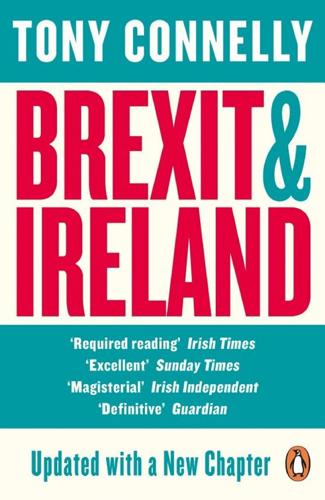
Brexit and Ireland: The Dangers, the Opportunities, and the Inside Story of the Irish Response
by
Tony Connelly
Published 4 Oct 2017
At its hi-tech facility in Craigavon, County Armagh, the Almac Group takes drugs on licence, manufactures them and distributes them to European, American and Asian markets. Every year, Almac ships 84,000 consignments of pharmaceutical goods from Craigavon to the EU single market via Dublin. These are ‘cold-chain’ products, despatched in highly regulated, refrigerated and sealed containers. Under EU rules, every time one of these products is released it must be done by a qualified individual, and the testing done in an EU-certified laboratory. Starting on the morning after Brexit, Almac started getting phone calls from customers wanting to know if this would still be the case, and if the seals would be broken at new customs posts on the Irish border.
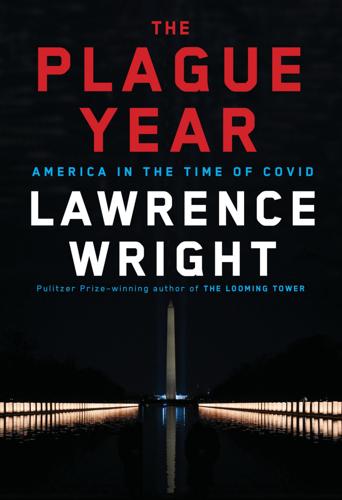
The Plague Year: America in the Time of Covid
by
Lawrence Wright
Published 7 Jun 2021
spreading in Wuhan in November: Betsy McKay, “Covid-19 Was Spreading in China Before First Confirmed Cases, Fresh Evidence Suggests,” Wall Street Journal, Feb. 19, 2021. can remain infectious: Dyani Lewis, “Can COVID spread from frozen wildlife? Scientists probe pandemic origins,” Nature, Feb. 26, 2021. packaging of frozen cod: Peipei Liu, et al., “Cold-chain transportation in the frozen food industry may have caused a recurrence of COVID-19 cases in destination: Successful isolation of SARS-CoV-2 virus from imported frozen cod package surface,” Biosafety and Health, Dec. 2020. “reasonable hypothesis”: Dyani Lewis, “Can COVID spread from frozen wildlife?
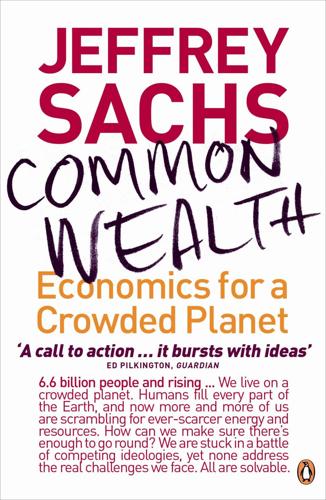
Common Wealth: Economics for a Crowded Planet
by
Jeffrey Sachs
Published 1 Jan 2008
The fifth is accountability. ICT provides a technological platform for audits, monitoring, and evaluation. Banking transactions can be made online (including more and more payment settlements by cell phone). Arrivals of products or their successful distribution in villages can be monitored in real time. Cold chains for vaccines can be verified by remote telemetry, as digital devices give real-time readings of the temperatures in refrigerated shipping containers. The sixth is matching, meaning the ability of the Internet to bring together remote buyers and sellers. The seventh is building communities of interest.
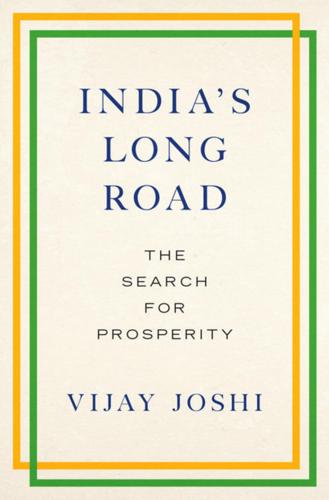
India's Long Road
by
Vijay Joshi
Published 21 Feb 2017
These de facto monopolies need to be swept away.52 Contract farming should also be encouraged so that Indian corporates get directly involved in agriculture. To some extent, P r o d u c t i v i t y a n d Ec o n o mic R e f or m [ 101 ] 102 this is happening. Some companies are trying to provide the ‘cold chain’ from farm to processing plant. Even so, the overall picture is unsatisfactory. More than half of the production of perishables such as fruits and vegetables goes to waste. The entry of multinational supermarkets would help to strengthen the supply chain. But it is held up by the reluctance of the government to displease the domestic retail trade.53 Another essential reform is to unwind the toxic mixture of price controls and input subsidies.

The Bill Gates Problem: Reckoning With the Myth of the Good Billionaire
by
Tim Schwab
Published 13 Nov 2023
In India, the Gates Foundation has served as the funder of India’s Immunization Technical Support Unit, which provides “techno-managerial” assistance. The Indian government defines the unit’s roles as “evidence based planning, program operations, monitoring and evaluation, strategic communication, cold chain and vaccine logistics management and support for Adverse Event Following Immunization.” One person who previously worked directly with the unit told me that the Gates Foundation positioned itself in this role to review draft reports and provide feedback, saying the foundation once asked that changes be made to a report to make it seem more favorable, apparently to push government endorsement of a vaccine.
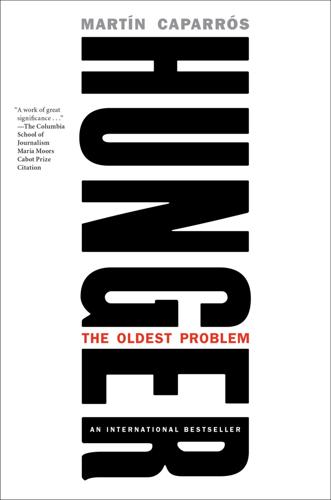
Hunger: The Oldest Problem
by
Martin Caparros
Published 14 Jan 2020
Flayed, boned, cut up in pieces, vacuum-sealed, shrouded in some kind of cellophane: the meat we eat in our countries does everything it can to distance itself from the animal it once was. Lest anybody think about the cow’s sad eyes when they eat a steak, the tender bleating of a lamb when digging into a gigot. In the poorest countries, animals are still animals until the very last moment; without refrigeration, without a cold chain, it is the only way to guarantee that they’ll arrive fresh to the table. In the poorest countries, in any case, the poorest never eat animals. In Niger, cow meat is a luxury food. In India, it is a forbidden food. Soon after my arrival back in the city, I wandered to the cacophonous market. A sparrow swooped down, poked around the animal pieces, searched for scraps from one stall to the next; fifteen or twenty of us—suddenly paralyzed, silent, in suspense—watched it scavenge.
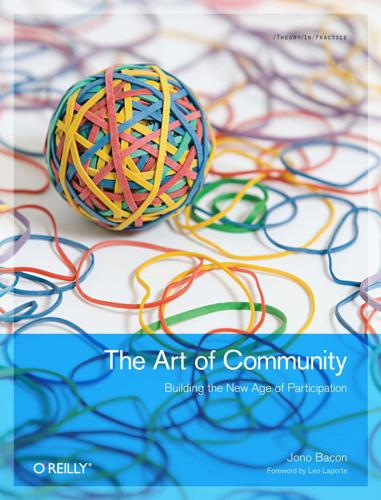
The Art of Community: Building the New Age of Participation
by
Jono Bacon
Published 1 Aug 2009
While following the process, you should take extra care to codify the council thoroughly. You should consult heavily with your community and expect a barrage of questions seeking to justify the new council. Your community is going to be nervous about new governance, and you will likely notice a slight paranoia that some of their rights are going to vanish as they perceive the cold chains of bureaucracy clanking down hard on the community. If you’ve followed the careful thought processes I’ve described, such concerns are ridiculous. We are all here to show bureaucracy who is boss, and ensure that it has no home in our communities. Make sure your community knows this. This will require ensuring that your codification is easy to read and understand, and regular reassurance to your community about the scope and responsibility of the new governance body.